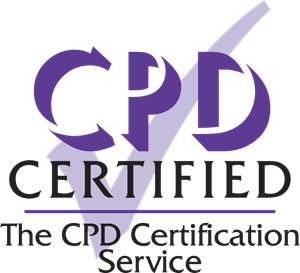Bow Tie Analysis Training

- Online (Microsoft Teams)
- +971 562069465
- info@velosiaims.com
-
Bow Tie analysis is a risk assessment and management technique used in various industries to identify and visualize potential hazards and their consequences. It is particularly popular in high-risk industries such as oil and gas, aviation, healthcare, and nuclear power.
The effectiveness of Bow Tie analysis lies in its application as a dynamic and iterative process for risk management. It provides a clear and visual representation of complex risk scenarios, making it easier for organizations to understand and manage potential threats.
-
By the end of this course, participants should be able to:
- Define and explain the fundamental concepts of Bow Tie analysis, including hazards, top events, threats, consequences, and barriers.
- Interpret and understand Bow Tie diagrams, recognizing the symbols, components, and relationships within the diagram.
- Develop the skill to identify and articulate potential hazards and their corresponding top events within a given scenario or system.
- Demonstrate the ability to identify various threats that could lead to the top event and recognize existing and potential barriers.
- Evaluate the effectiveness of existing barriers in preventing the realization of threats and the occurrence of the top event.
- Apply the Bow Tie analysis methodology to a real or simulated scenario, from hazard identification to barrier enhancement recommendations.
- Emphasize the importance of regular updates and reviews of Bow Tie analyses to ensure relevance and effectiveness in risk mitigation.
-
Training will be conducted via Microsoft Team Meeting, online. Meeting invites will be shared on the day before the first day of training.
-
This is a two-day course from 9:00 AM to 3:00 PM (Dubai Time)
-
- Presentation Slides
- Training Recordings
- Study References
-
Upon successful completion of training, participants will receive a “Bow Tie Analysis Course Completion” certificate.
-
This course is appropriate for a wide range of professionals but not limited to:
- Risk Managers
- Safety Managers
- Operations Managers
- Process Engineers
- Quality Assurance Professionals
- Regulatory Compliance Officers
- Health and Safety Officers
- Emergency Response Teams
-
Participants can avail discount of either an early bird or group discount whichever is higher with additional discount when signing up for 2 or more courses.
Group Discount (same company only)
- 15% Discount for groups of 5 or more
- 10% Discount for groups of 3-4
Bundle Discount
- Sign up for 2 courses and get an extra 10% off
- Sign up for 3 courses and get an extra 15% off
Course Outline
-
1.1 Overview of Risk Management
- Definition of risk
- Importance of risk management
- Introduction to proactive risk assessment
1.2 Introduction to Bow Tie Analysis
- Definition and history
- Key components of a Bow Tie diagram
- Purpose and benefits
1.3 Relevance to Different Industries
- Application in oil and gas, aviation, healthcare, etc.
- Case studies showcasing successful Bow Tie analyses
-
2.1 Hazard Identification
- Methods for identifying hazards
- Common hazards in different industries
2.2 Top Event Definition
- Identifying and defining the undesired outcome
- Importance of clearly defining the top event
2.3 Threat Identification
- Identifying potential threats leading to the top event
- Categorizing threats
2.4 Barrier Identification
- Types of barriers (preventive, mitigative, recovery)
- Identifying existing barriers
-
3.1 Bow Tie Diagram Components
- Nodes: hazard, top event, threats, consequences, barriers
- Arrows: representing relationships and flow
3.2 Building the Diagram Step by Step
- Practical exercises on creating a Bow Tie diagram
- Reviewing and refining the diagram
-
4.1 Barrier Effectiveness
- Evaluating the strength of existing barriers
- Identifying gaps and weaknesses
4.2 Consequence Analysis
- Assessing potential consequences
- Prioritizing consequences based on severity
4.3 Risk Assessment
- Quantitative and qualitative risk assessment methods
- Using risk matrices and other tools
-
5.1 Enhancing Barriers
- Strategies for improving existing barriers
- Introducing new barriers
5.2 Cost-Benefit Analysis
- Evaluating the cost-effectiveness of mitigation strategies
- Balancing risk reduction with operational costs
-
6.1 Real-world Applications
- Case studies from various industries
- Lessons learned and best practices
6.2 Hands-on Exercises
- Participants apply Bow Tie analysis to a simulated scenario
- Group discussions and feedback
Past Trainings
| From | To | Status | Type |
|---|---|---|---|
| Completed | Training |




